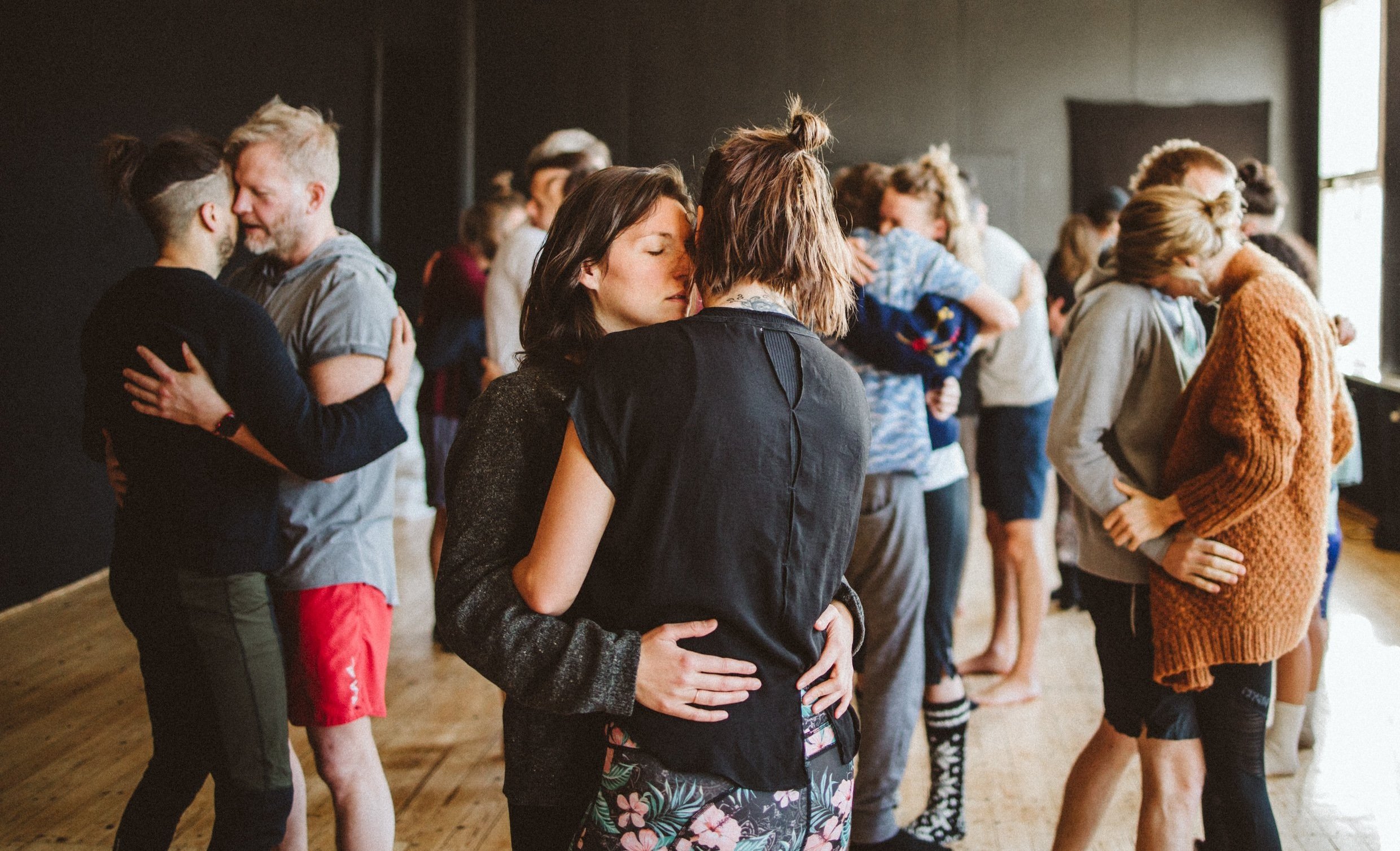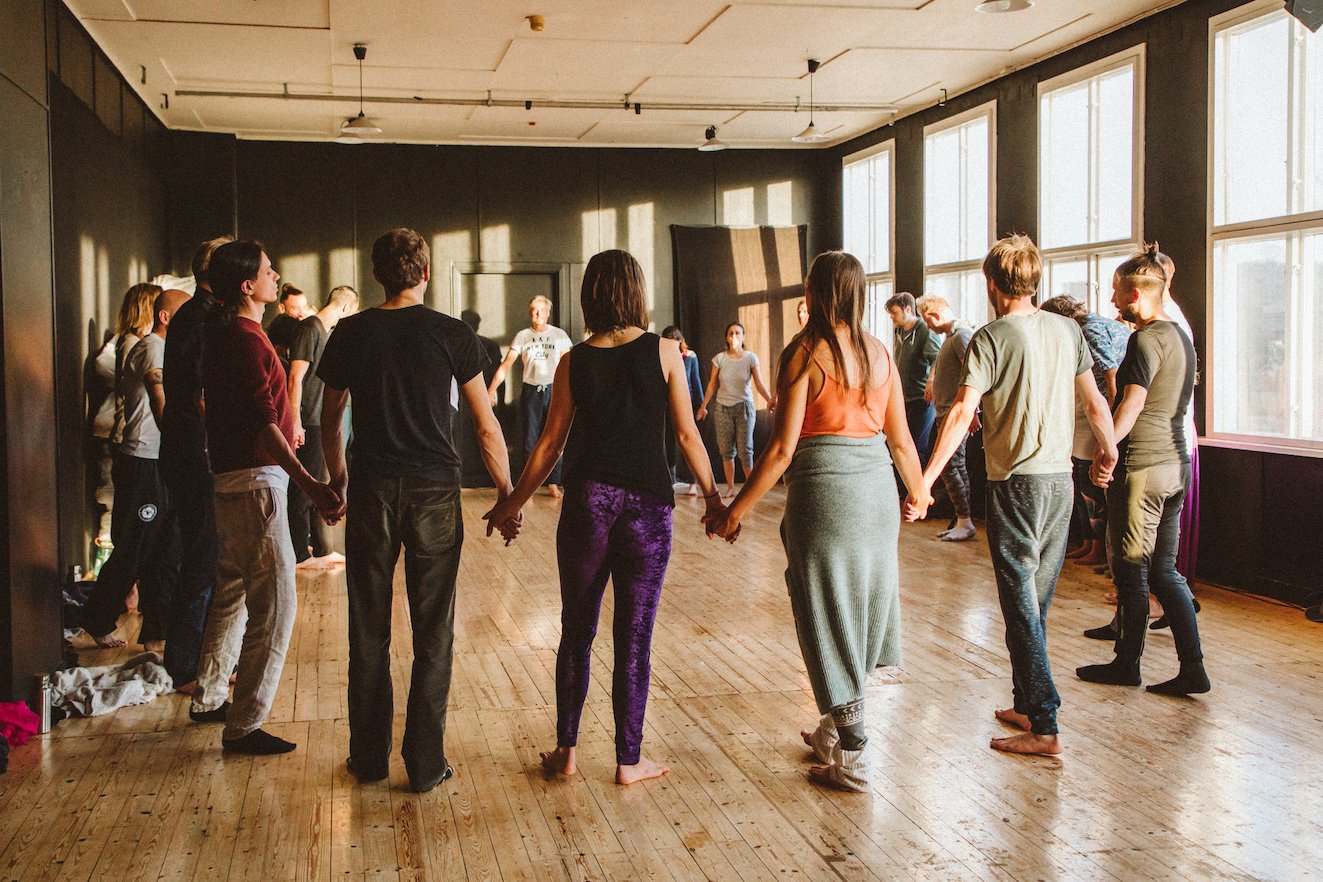
24 to 30 March 2025Module One:
Bonding as a Community
Key Focus Points:
Develop a “somatic sense of safety” – feeling more safe in every cell of your body.
Reclaim your body as an intelligent instrument that works as an inner barometer.
Learn how to feel and trust the intuitive yes & no to connection with others in your own body.
Safely, gently come back into connection with your own body and others
Become aware of your own needs and learn how to express them
Descend from spinning thoughts of judgment, blame and victimization – to an embodied sense of compassionately being able to make room in your body for both the welcome and unwelcome experiences - practicing equanimity and reclaiming “response-ability.”
Learn embodied relational awareness practices that allow you to regulate your nervous system as you deepen into a compassionate intimacy with yourself, as well as others.
Experience trust and a sense of belonging in yourself, with others, in group and in community.
Experience the deep trust and the healing potential that emerges out of a community that is practicing meeting each other with the body in mind.
Develop a stronger relationship with your masculine and feminine energy together with others.
Be seen, heard and felt in your personal, relational and sexualhistory

A Holistic Picture
Do you feel deeply safe in your body and in intimate connection with others? Do you sometimes feel anxiety, fear of rejection, shame or uncertainty about whether you are truly welcome just as you are, with the body you have, the shadows you hide, the desires you feel? Can you be naked and relaxed and let your body talk – emotionally, physically, sensually – with others?
When we feel safe in connection with ourselves and others, we have the opportunity to thrive, to discover, reveal and enjoy who we are. When we don’t feel safe, even the thought of closeness with others stirs up endless problems.
This impacts not only our relationships. Psychological research has shown that feeling safe and secure in connection with others is one of the strongest indicators of wellbeing, health, fulfilling relationships and resilience in life.
We will focus on developing this much-needed foundation. Starting with the understanding that suffering comes when we isolate in shame, when we dissociate and hold back parts of us from connection, such as; our genuine thoughts, feelings, needs, longing and desires. It is when we meet them in connection with others that we heal.
We slowly explore how to feel and share who we are and get in touch with what is actually happening in our experience – regardless of what we think about it. We build a sense of community with each other by revealing ourselves honestly while being received and mirrored by others in compassionate ways that allows us to feel truly seen, heard and accepted. When we build this kind of space together, our innate capacity to bring each other back into wholeness emerges naturally. We experience being met in ways we have longed for since as long as we can recall. This sense of being together with all of us welcomed little by little allows our joy, aliveness and creativity to start flowing again.
Your authentic relational stories can be given voice – and heard with loving compassion. Distrust can shift to curiosity. The ways you hold back with others are invited to relax into the support of the holding environment and evolve. The emotional nutrients you missed growing up can be absorbed now, in community. Wherever you’ve contracted in fear, you’re now welcome to expand in love and playfulness.
Together we transition from feeling all alone and overwhelmed, to experiencing a new way of being, becoming a communitarian, a way in which “we’re all in this together”. My pain is your pain, and your transformation is my transformation. We function like mirrors for one another. This allows us to acknowledge both the pain of the past and the way into a new reality. We rewire the relationship to our triggered feelings – from shame, worthlessness and isolation… to connection, self acceptance, erotic innocence and play. As we pair the old with the new possibilities, we realise that what we avoid and tried to keep hidden from others, is the very food for the connection we all starve for. Now as we step through the rough states of mind, together, we come home to where we are nourished and fed by all parts that finally come back into one whole. Now, our “angst becomes our liberation,” as we open our eyes to the possibility that we are everything; that we can hold both the victim and perpetrator, vulnerable and powerful, fearless and scared.
All of this allows us to truly become “naked” with each other, and from here, a new, transformational experience of intimacy can arise. In deep safety, penetrative honesty, fierce love and vibrant vulnerability, there is the invitation to explore our longing for connection and authentic self expression in a space that is cleared of the regular projections and demands that characterize most relating. We meet in the innocence of eros.
This is the foundation for a bold new life of self-love and genuine connection.
To support us in this healing, we work directly with the heart and the body. We use breath, sound, touch and movement practices that help us drop in with each other to a space of real, authentic connection. We discharge emotional and physical blockages to the free flow of our energy. Maps and models are shared that help us understand our relational patterns as adaptive strategies of the past and new ways of relating that pave the way for a more securely attached and relationally resilient way of relating from a tantric and interpersonal, neurobiological perspective. In Module one, we bond as a community. This is the foundation stone for the rest of the training.
Additional Practices:
Trust Building and Boundary Practices (Drawing from Sensorimotor Psychotherapy, Embodied Intimacy, Wheel of Consent)
Theoretical Context:
Theoretical Context (Drawing from Interpersonal Neurobiology, Sensorimotor Psychotherapy, Mondo Zen, Humaniversity Psychology, Attachment Theory, Tamera Healing Biotope Philosophy, David Cates)

